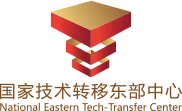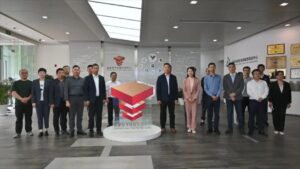Not long ago, the "Fujian-Shanghai Technology Transfer Roundtable" was held in Fuzhou. At the meeting, the National Technology Transfer Straits Center and the National Technology Transfer East Center signed a strategic cooperation framework agreement, in which the two sides will cooperate in the release of scientific and technological achievements, technology exchange, technology trade, intellectual property services and other aspects of work to achieve connectivity, complementary advantages and resource sharing.
One is the source of scientific and technological innovation and the other is the starting point of the "Belt and Road", a large southeast coastal province rich in industrial resources, when the supply and demand chain of technology transfer between Shanghai and Fujian is opened up, what kind of economic efficiency will result?
Resource sharing, layout of the "Belt and Road"
Yaoji Soy Sauce is an old store in Fujian Province, because it is brewed by hand in accordance with ancient methods, although the price is high, it is still loved by consumers. In recent years, as the business grows, the chairman of the board, Zhou Qing Yao, has thought about expanding the production. According to previous thinking, expanding production means buying land, building a factory and buying equipment, but after two years of delays, there was little success. Later, Zhou had no choice but to turn to his old friend Dong Zhongwen, chairman of the Upper Bay Valley Intellectual Property Agency. With the introduction of Dong Zhongwen, Yaoji Soy Sauce introduced bio-fermentation technology from Shanghai, which shortened the production cycle from one year to three months and extended the shelf life from three months to two years. Sales suddenly increased from over 2 million to 180 million.
Fujian is not only rich in agricultural resources, many regions have distinctive industries, such as the lithium-ion new energy industry in Ningde, non-ferrous metal processing in Xiamen, and specialty agriculture in Sanming, but there are relatively few universities and large research institutes, and research resources are relatively insufficient. Shanghai, on the other hand, is relatively rich in scientific and technological resources and is building a global science and technology center. In the opinion of Chen Hongkai, director of the Innovation Service Division of the Shanghai Science and Technology Commission, Shanghai and Fujian are like two magnets that "carry out technology transfer cooperation and are very complementary."
Chen Hongkai suggested that Shanghai and Fujian should promote in-depth cooperation between universities, research institutes and enterprises. "Explore docking the technical resources of Shanghai universities and research institutes around Fujian's unique industries to establish a complete technology transfer system of precise docking, precise incubation and precise transformation, which will then be effectively evaluated by the government and intermediaries."
In addition to industrial resources, Fujian is known as the "21st Century Maritime Silk Road Core Area" and is an important port city in the "Belt and Road", with unique geographical advantages and the basis for foreign exchanges and cooperation.
According to You Jiansheng, deputy director of Fujian Science and Technology Department, since the last century, Fujian has established stable scientific and technological exchanges and cooperation with more than 70 countries and regions, including countries along the "Belt and Road". Since 2013, the science and technology department has invested more than 70 million yuan to support foreign technology cooperation and transfer. To date, Fujian has established 13 national-level international cooperation bases in countries along the Belt and Road, in addition to a series of entrepreneurial and industrialization bases for Taiwan.
Last year, the high-speed rail line construction project in South Africa undertaken by Fujian encountered a problem: due to the dry climate of South Africa, how to ensure that the bridge will not be deformed in high temperature and dry conditions? Fujian made a difficult decision. "Shanghai, as an international technology center, has an advantage in technology." You Jiansheng suggested that in the future, Shanghai and Fujian can carry out joint technical research to solve the important technical issues raised by countries along the "Belt and Road". In addition, the construction of science and technology parks in many countries along the "Belt and Road" started late and the concept of technology incubation and transformation is weak, so the two sides can lay out the construction of science and technology parks and industrial parks in these countries.
"In the future, Shanghai will be positioned as a global technology transfer hub, and not just local Shanghai technology, but some international and overseas technologies can be promoted and transformed in other regions through Shanghai." Chen Hongkai said that opening up the supply and demand chain of technology transfer between Shanghai and Fujian can provide an important grip for the radiation of Shanghai's technological achievements to the "Belt and Road" countries.
"The biggest obstacle is information asymmetry."
Engaged in technology transfer work these years, Shanghai Cloud Hatching Information Technology Co. CEO Tang Xiaolin often lamented: "enterprise demand is too difficult to tap." On the one hand, due to the lack of normal information push and interaction mechanism, enterprise demand is often scattered, resulting in the project landed when the transformation is not enough exports; on the other hand, not digging enterprise demand, because of the lack of professional intermediaries and technology transfer talent. "Tapping enterprise demand is by no means a simple thing, and before communicating with an enterprise, you have to understand the enterprise in depth, including its industry, competitors, main business, industry chain and the possible future direction of development."
How to bridge the gap between scientific and technological achievements and business? According to Chen Hongkai, the biggest obstacle is the asymmetry of information, the lack of professional technical intermediaries, and the inability to efficiently interface between technical capabilities and business needs. "Technology transfer without intermediaries can not produce value, we encourage the development of intermediaries, through market-based mechanisms to solve."
The National Technology Transfer Straits Center and the National Technology Transfer East Center work together to build a "highway" for the efficient circulation of technology and enterprise needs between Shanghai and Fujian. Both the Eastern Center and the Straits Center are platforms for the free growth and concentration of professional technology intermediaries.
Shanghai cloud hatching information technology limited company is the national technology transfer eastern center platform under the technology intermediary institutions, is the first direct service to the technology achievement team and realize the transformation of the results of entrepreneurial companies, its "science and technology" network platform, with tools, data, manual service to achieve one-stop technology achievement transformation. Tang Xiaolin said, "Cloud Incubation's position is a professional technology transfer intermediary." In the eastern center, such specialized technology intermediaries are not uncommon. According to Chen Hongkai, Shanghai is currently "genuine" professional technology intermediaries total of more than 200, but "energy level is far from enough."
The National Technology Transfer Straits Center, established in Fuzhou last year, is also making great efforts to introduce domestic and foreign transfer institutions to settle in the center. Up to now, there are 26 institutions in the Centre, including nine international technology transfer institutions, nine transfer institutions from ministries, institutes and universities, and eight cross-strait transfer institutions.
"Xiamen" is the meat and potatoes in the eyes of the government and enterprises. As China's only online trading platform for the transformation of scientific and technological achievements, KEE has built more than 60 scientific and technological achievements trading platform for governments around the country. Its pioneering national online technology transaction price evaluation system solves the problem of difficult pricing and enables online trading of technology. Chen Hongkai said he hopes the two sides will strengthen cooperation in the future. "This technology is something Shanghai lacks and deserves to learn from."




